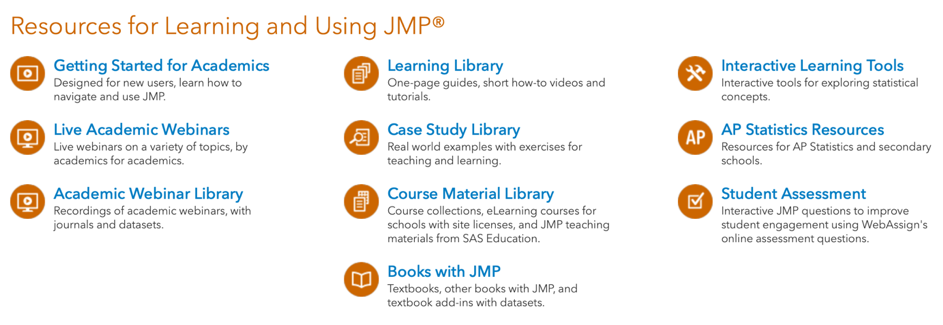 Engage students in data analytics without wasting class time to teach the tools.Are you teaching with data? If your answer is yes, then hang on: This series of six blog posts can help you to bring statistical concepts to life and to engage your students by using state-of-the-art course material.
Engage students in data analytics without wasting class time to teach the tools.Are you teaching with data? If your answer is yes, then hang on: This series of six blog posts can help you to bring statistical concepts to life and to engage your students by using state-of-the-art course material.
Rather than boring your students with dusty lab exercises, get them inspired about statistical thinking and real-world problem solving.
This series will introduce you to different types of content, like interactive demos, e-learning courses or how-to guides. For all types of content, you will see sample use cases, teaching best practices and where to access the material. All resources are easily available and free (just a few types require a JMP academic site license being in place).
Why Professors Like JMP Academic Resources
JMP teaching resources are appreciated by many professors globally because they make their academic lives a bit easier. Here's what they say:
- “I like teaching with JMP because the software is so easy to use for my students, and in the rare cases of questions students can find most answers themselves in the JMP resources," says Imma Oliveras, Lecturer in Ecosystems Science and Deputy Programme Leader on Ecosystems at the University of Oxford, UK.
- “The software is excellent, and it provides a great user experience for students. Some of the case studies are also very nicely developed and I appreciate the availability of the course on regression in SKP. Great job! I hope you will continue to develop more educational resources,” says Nikhil Padhye, Associate Professor and Biostatistician at the University of Texas Health Science Center in Houston, US.
- “Using JMP teaching resources in my classes saves me a lot of time, since whether we are using new features or not, the material is always kept up-to-date by JMP with new versions or features,” says Jacqi Asscher, Senior Lecturer at Kinneret College and Technion, Israel, and Industrial Statistician.
This series of six posts tells you why so many professors love teaching with JMP. However, this series is not about the software (except the following brief section), but about the content that helps you teach using JMP.
Don’t know JMP yet?
In order to benefit from reading the upcoming blog posts, you do not have to use JMP or know about JMP already. A passion for teaching the analysts and engineers of tomorrow helps, of course.
If you already teach using JMP, you may agree that JMP software is a perfect choice to engage students about data analytics without wasting class time to teach the tools:
- JMP outputs always link analysis results with graphics.
- Interactive visualizations are the fun part for most students. (As Yogi Berra said, "You can see a lot by just looking.")
- The point-and-click user interface, with tool tips, context menus and the progressing workflow removes any barrier between the user and the data.
- Built-in tutorials (Help menu > Tutorials) and hundreds of sample data files (Help menu > Sample Data > Examples for Teaching) with many stored analysis examples (look for green triangles) provide opportunities to explore and learn immediately upon installing JMP. One's own data can also be imported in many ways.
- No limits for students who want to go the extra mile: They can develop their own applications in JMP Scripting Language, with an optional integration with other packages like SAS, R, Python, MATLAB or Excel.
If you don’t have access to JMP yet, you can download a free trial version at our website.
The Academic Portal for Teaching and Learning JMP
You can access most of the resources you learn about in this series from the JMP resources online portal at www.JMP.com/teach. Visit the JMP Academic homepage www.JMP.com/academic and get the most from our academic program by selecting your role, being a faculty member, academic researcher or student.
 JMP Academic Resources Portal (Dec 2019) links to 90% of the resources discussed in this blog series
JMP Academic Resources Portal (Dec 2019) links to 90% of the resources discussed in this blog series
What is coming next?
In summary, there is no easier way to teach with data: On the one hand, the software could not be more intuitive than JMP. On the other hand, the resources make students really independent. This enables professors to teach statistical thinking rather than software!
The next four posts introduce material for teaching statistical concepts and methods, for self-paced e-learning and for problem solving. Finally, we discuss some best practices using our resources in different teaching settings.
Click to see the other posts in this series about teaching with JMP.
You must be a registered user to add a comment. If you've already registered, sign in. Otherwise, register and sign in.